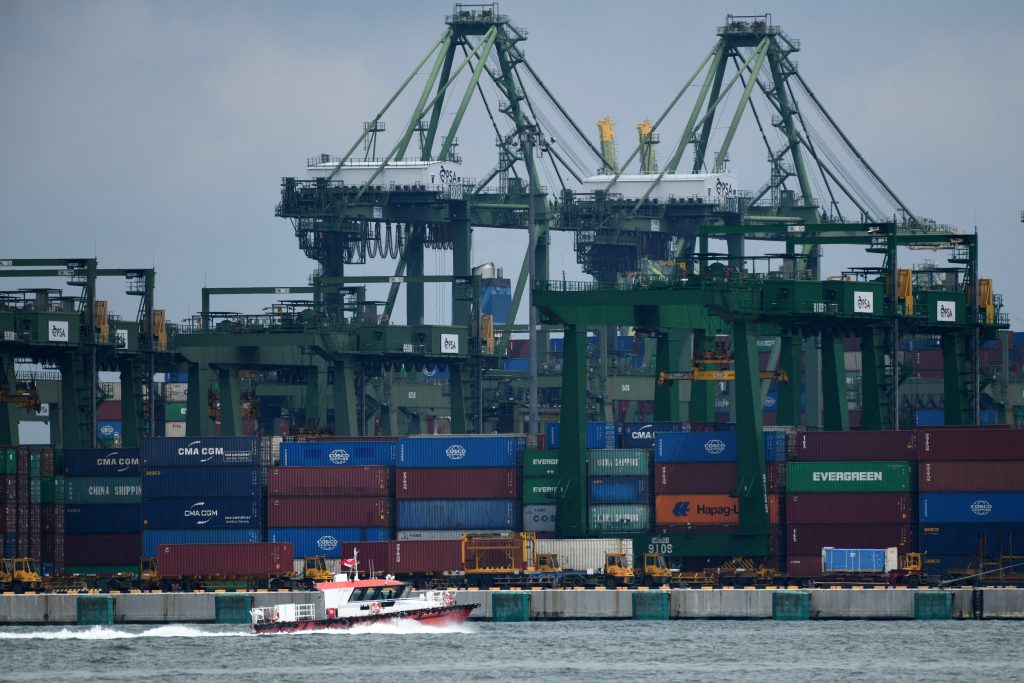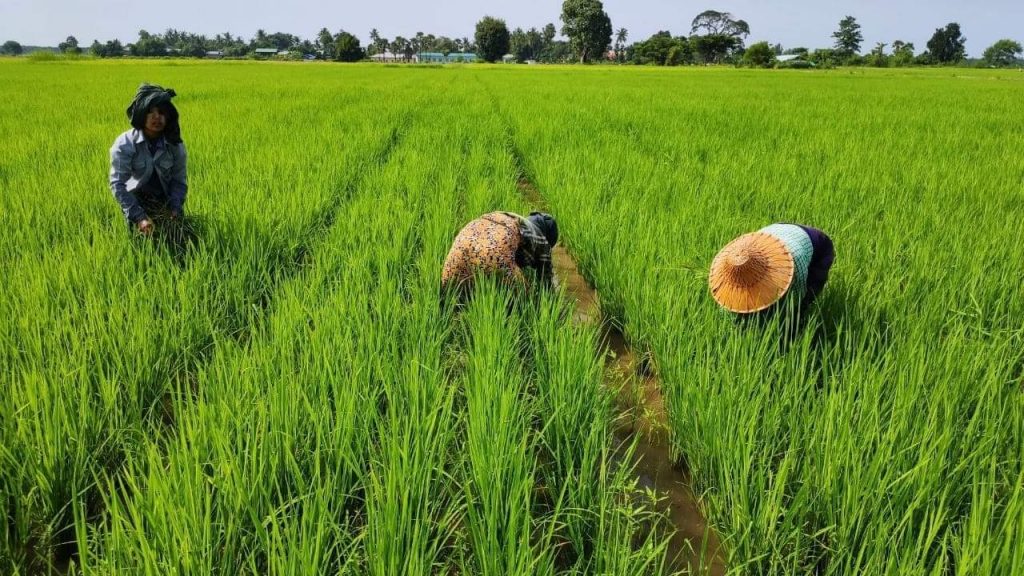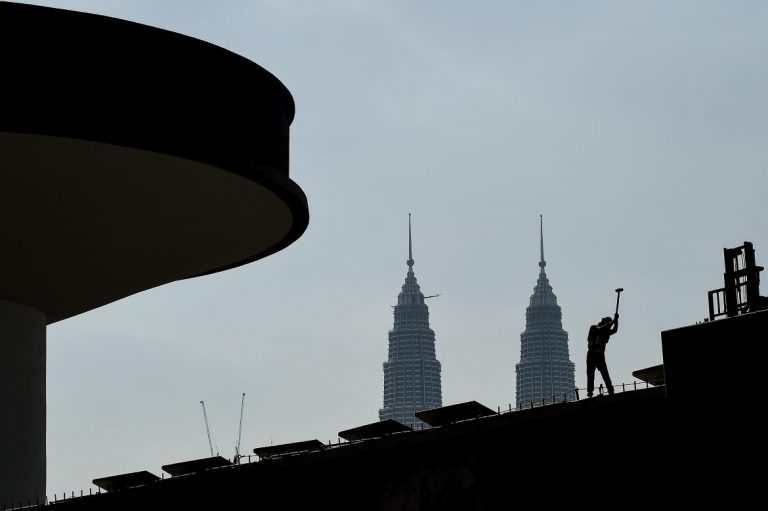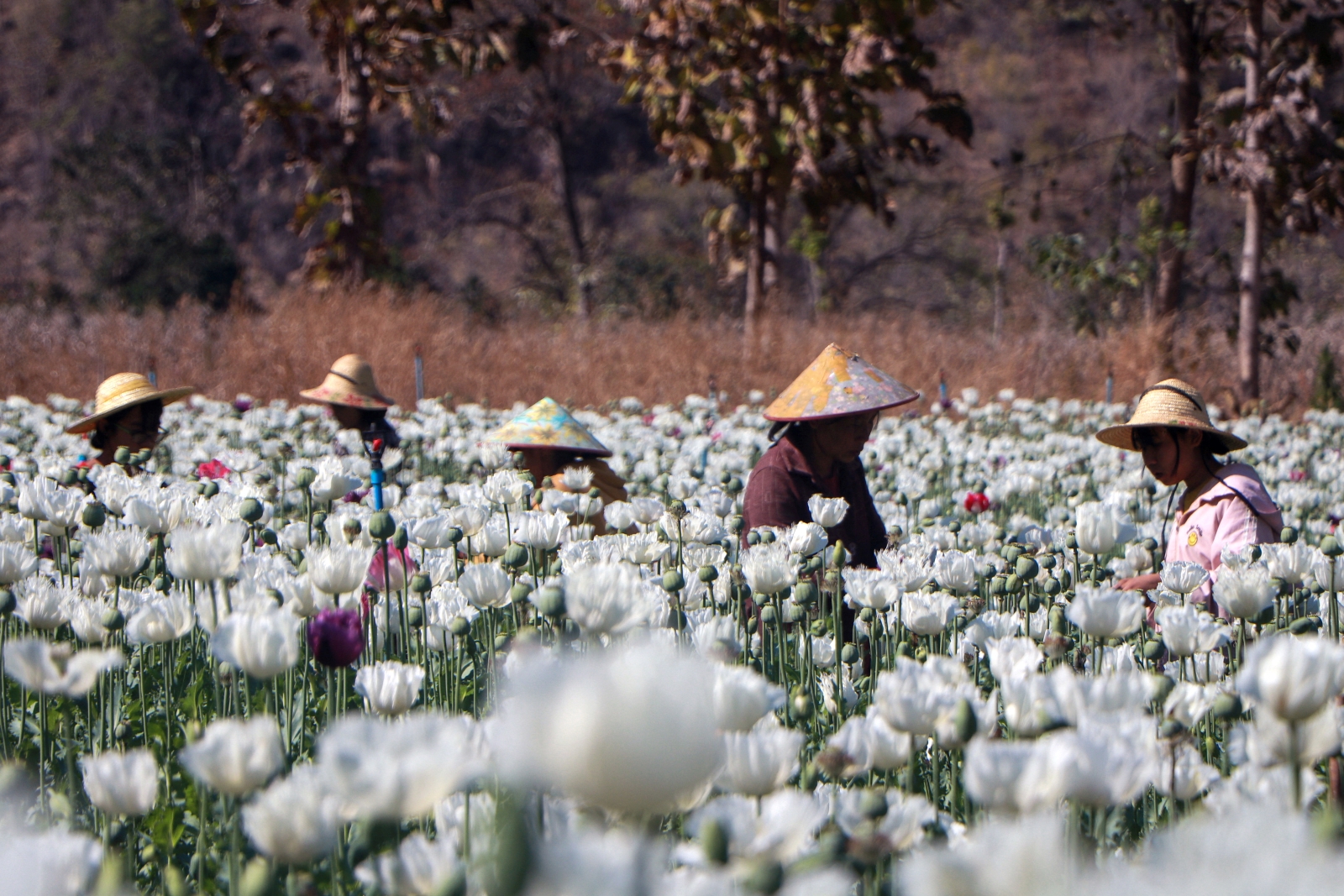Myanmar’s rice farmers are facing higher production and transportation costs, lower yields, and low prices, leaving many worried they will no longer be able to earn enough to survive.
By FRONTIER
Myanmar’s rice farmers are facing a bitter harvest. With the price of agricultural inputs more than doubling since the start of the year and market conditions more unpredictable than ever, cash-strapped farmers faced a tough choice: take on more debt to buy their usual amount of agricultural inputs, or reduce their use of fertiliser, insecticide and weedkiller.
Many have chosen the safer option of spending less, but this will almost certainly result in a lower yield of paddy from this year’s monsoon season crop.
U Myint Wai is the owner of a 100-acre farm in Maletto village, in Ayeyarwady Region’s Maubin Township, and normally averages 70 baskets of paddy an acre. He told Frontier that farmers like him had had to cut costs drastically just to cope with the pandemic, and he’s expecting a drop in yield of up to 30 percent.
“Farmers can use only one-third of the inputs they used the previous year,” he said. “The per-acre yield will certainly be reduced. A plot that used to yield 70 baskets per acre may now yield only 50 baskets.”
Paddy farmers told Frontier that the price of a bag of fertiliser that had cost K20,000 (about US$10 at an exchange rate of K2,000 to the dollar) last year, was selling for K50,000 (about $25).
Since the coup, Myint Wai said, most farmers have been struggling just to make ends meet, let alone save for the future. Although increased joblessness from the pandemic and political unrest means there is no shortage of labour, many farmers simply can’t afford to hire the people they need to bring in the harvest.
U Sann Tin, who farms paddy, peanuts and sesame in Magway Region’s Myaing Township, said that farming families were having to do more with less.
“A plot that normally needs to be weeded twice can only be weeded once,” he said. “If the work can be done by members of the family, we do it ourselves instead of hiring anyone. We have to weigh [the cost of] everything.”
Read more: Monsoon rice crop in peril as farmers hit by coup turmoil
For the cultivation of crops other than paddy, daily wages vary according to location. In Myaing Township this year, a man can expect to earn about K3,000 ($1.50) for half a day’s weeding, but a woman will earn only half that.
“Farmers have to carefully consider whether to buy even one bag of fertiliser,” said the owner of a shop selling agricultural chemicals in Pyinmana Township, Nay Pyi Taw. He declined to give his name because he feared reprisals for speaking to a journalist.
Myint Wai said farmers are waiting nervously to see if they will make any profit this year. “We are growing rice, but we do not know how much we’ll earn,” he said.

Falling exports
Farmers fear that even as they are facing higher production and transportation costs, the price of rice may fall. Many rice mills closed when the third wave of COVID-19 tore through Myanmar in July, border gates remain shut, and demand from other foreign markets has dropped.
Although most rice produced in Myanmar is for domestic consumption, exports have become an important feature of the agricultural economy over the past decade, helping farmers earn more for their crop.
Myanmar was one of the world’s leading rice exporters until General Ne Win seized power in 1962 and adopted the disastrous “Burmese Way to Socialism”, which left farmers with little incentive to produce more rice than they needed for subsistence.
A few regime cronies were allowed to export under the previous military dictatorship, but after U Thein Sein came to power in 2011 the export process was liberalised significantly.
U Myo Tint Htun, deputy secretary of the junta’s Ministry of Agriculture, Livestock and Irrigation, told Frontier that from 2012 to 2018 Myanmar exported between 2 million and 4 million tonnes of rice a year.
Exports have already started to fall since the coup. In the first 10 months of this fiscal year, to the end of July, Myanmar had shipped or trucked 1.7 million tonnes of rice and broken rice to foreign buyers, down from 2 million tonnes over the same period the previous year.
The decline is mainly because of higher transportation costs by both road and sea, said U Ye Min Aung, chairman of the Myanmar Rice Federation.
“The rising transportation costs are the biggest challenge for exporting rice this year,” he said. “But we are looking for all possible ways to continue exports … of Myanmar rice and broken rice.”
Myanmar ships 70pc of its rice exports and the remaining 30pc is transported across land borders, show Myanmar Rice Federation figures.
Because Myanmar imports most of its refined fuel, the collapse of the kyat since the start of this year – it is trading at close to half its pre-coup level – has sent fuel prices skyrocketing.
But shipping rates have increased even further, said Ye Min Aung. He told Frontier that it cost about $8,000 to ship a container of rice to Europe this year, four times what it cost last year.
“The main reason for the rising cost of transportation is COVID-19,” he said. “Because it is a pandemic, the cost of marine transportation has risen globally, not just in Myanmar. But because of the current unstable situation here, some of the foreign marine cargo-liners don’t want to come here.”
There are also headaches for those who export through land borders. U Khun Min Thant, a rice exporter at Muse in northern Shan State, opposite China’s Yunnan Province, said border closures caused by the pandemic had a serious impact on his work.
As COVID-19 cases began to skyrocket in Myanmar in early July, China closed all border crossings with Myanmar, including those at Muse, which accounts for 70pc of the country’s border trade.
Read more: ‘Prices are dropping exponentially’: Border trade hit hard as China shuts the gates
“Since the border gates with China are closed, rice exports across the border have been completely suspended — not for political reasons, but for the pandemic,” he said.
Although the number of COVID-19 cases remains high in Shan State, traders in Muse said they were optimistic that trade would resume in mid-October.
“It is possible to export through marine channels, but it requires too many documents and papers. So just a few exporters use this channel. When the pandemic subsides, rice exports will return to normal.”
The military regime is certainly hoping so. It is aiming to promote agricultural self-sufficiency and has also made agriculture-based industrialisation a key objective, both in public speeches and its draft Myanmar Economic Recovery Plan.
Coup leader Senior General Min Aung Hlaing conceded at a September 7 meeting that rice exports had fallen short of expectations. He suggested that farmers’ incomes could be increased by raising the per-acre yield through the use of good quality strains of seeds and necessary agricultural inputs, and urged regional and state chief ministers to prioritise agriculture.
But his comments seem out of step with a reality in which the tanking kyat makes those inputs significantly more expensive, and in which a banking crisis has made access to credit much more difficult and expensive.
As public policy analyst U Khine Win wrote recently in Frontier, the impact of farmers using less inputs has not yet been reflected in trade figures, because this year’s monsoon crop has not been harvested. Although overall trade fell 20pc this fiscal year, agriculture exports remained steady. As a result, they account for more than one-third of all exports – a 25pc increase on the previous year.
“Decreased fertiliser use this year means agricultural outputs are likely to fall dramatically in the near future, hitting both exporters and importers hard,” he wrote.
The International Food Policy Research Institute, which has predicted that fertiliser sales will decline by half this year, has warned that lower yields will have a significant impact on poverty, as about 80pc of the country’s poor are linked to the agricultural sector.
Read more: The economics behind Min Aung Hlaing’s grand delusions
A price fix?
Farmers are also worried about the price they’ll receive after they harvest their crop in the coming months.
Rice merchants say the retail price of the cereal has been steadily rising since the coup, because people have been stocking up on staple foods. A 50kg bag of low-grade manawthukha rice that cost K29,000 pre-coup is selling for K32,000.
U Hlaing, a rice merchant in Mandalay, suggested that the rises would be temporary.
“The price of rice does not rise too much,” he said. “Mainly because of spreading rumours about the political situation, people rush to buy rice, and it prompts the merchants to raise the price. But it does not last long. The next day when the rumour subsides, the business is normal.”
But even if retail prices are higher than pre-coup levels, higher production and transport costs mean farmers are unlikely to enjoy a higher profit on their paddy. Many fear they may lose money.
In recent years, the government has set a floor price for paddy to ensure farmers do not sell their crop at a loss. Ye Min Aung said that the Myanmar Rice Federation is still calculating the floor price – a process that involves negotiations among representatives from the federation, the government, farmers and rice merchants.
“I think it will be announced around the same time as last year [in October],” he said. “The [military] government will make the announcement.”
Once set, buyers purchase rice from farmers at the market rate or the floor price, whichever is higher. The floor price was fixed at K500,000 for 100 baskets of paddy in 2018 and 2019, before being raised to K520,000 in 2020. Ye Min Aung said he expected it to be about K540,000 for 100 baskets this year. “The floor price will certainly be higher than that of last year but not by much,” he said.
“The floor price is just the floor price. The market price can be higher,” said Ye Min Aung, adding that last year 100 baskets of paddy fetched between K500,000 and K900,000 ($250 to $450 at current exchange rates), depending on the variety.
A basket of paddy weighs 20.87 kilogrammes or 46 pounds, so 100 baskets is just over 2 tonnes.
Although the Myanmar Rice Federation maintains that setting a floor price helps farmers make a profit while stabilising prices for consumers, some farmers doubt that it will be an effective safety net.
U Ko Ko Naing, who grows paddy on 15 acres in Mandalay Region’s Patheingyi Township, said he doubted the regime would be able to enforce the floor price if the market rate was lower.
“It makes no difference how you fix the price in a free market. The government cannot take action against a buyer who pays less than the floor price,” he said. “If buyers pay the floor price when the current price is lower than that, they expect higher quality. The price mainly just depends on supply and demand.”
The regime will also be keen to ensure prices do not rise too much. The impacts of COVID-19 and the coup have left many households struggling to afford even the basics, like rice, salt and cooking oil. With the World Bank forecasting an 18pc contraction in GDP and more economic pain ahead, the United Nations Development Programme expects poverty levels to double by early next year, to more than half the population.
Ma Lin Lin of Pyinmana Township in Nay Pyi Taw is one of the many people who have been hit hard by the mounting crises. Her husband was working as a carpenter on a construction site, earning about K10,000 a day, but is now mostly out of work.
Lin Lin is keeping their family of five afloat by running a small store from her house, but has seen her daily takings fall from K20,000 to less than K10,000. It’s barely enough to cover the rent on their house, and she’s had to cut back on spending as much as possible.
“For daily food, we weigh and use what we can get each day,” she said. “In the past we would mix half rough rice with half fine rice. Now we just have to eat rough rice.”
She’s worried that sooner or later, the family will fall into a spiral of debt. “We have nothing to spare, so if someone in my family fell ill, what would we do?”







